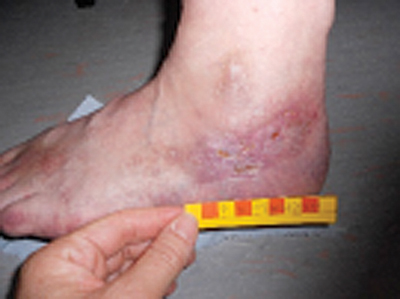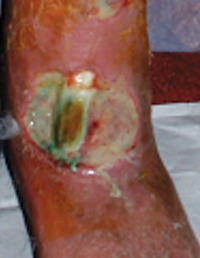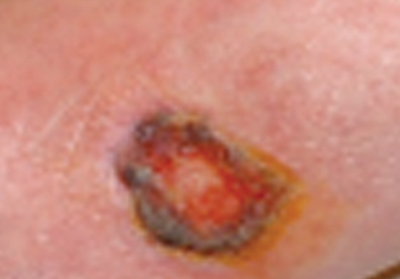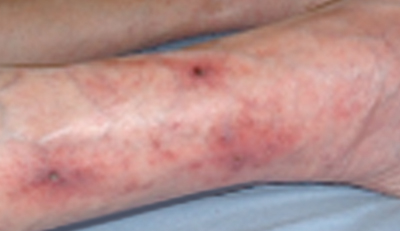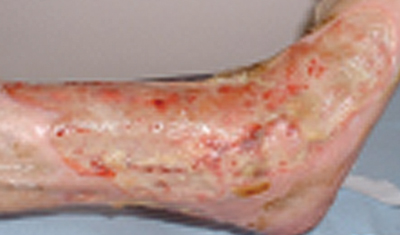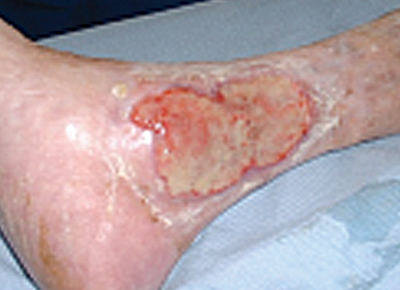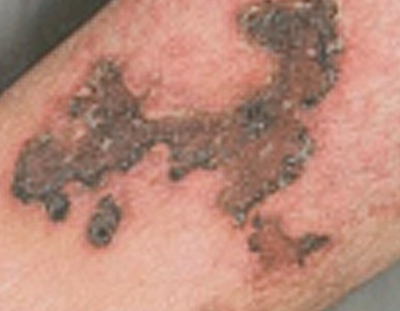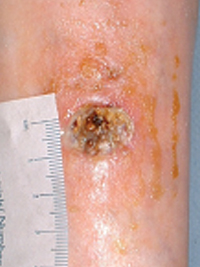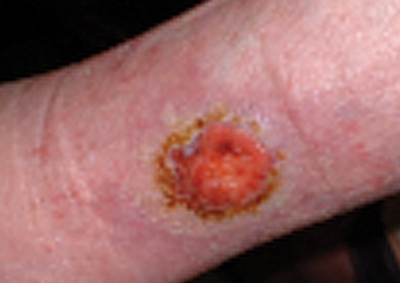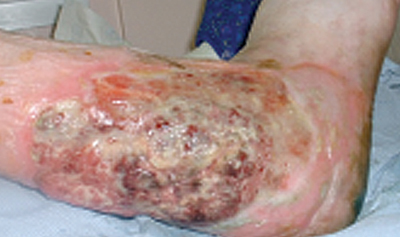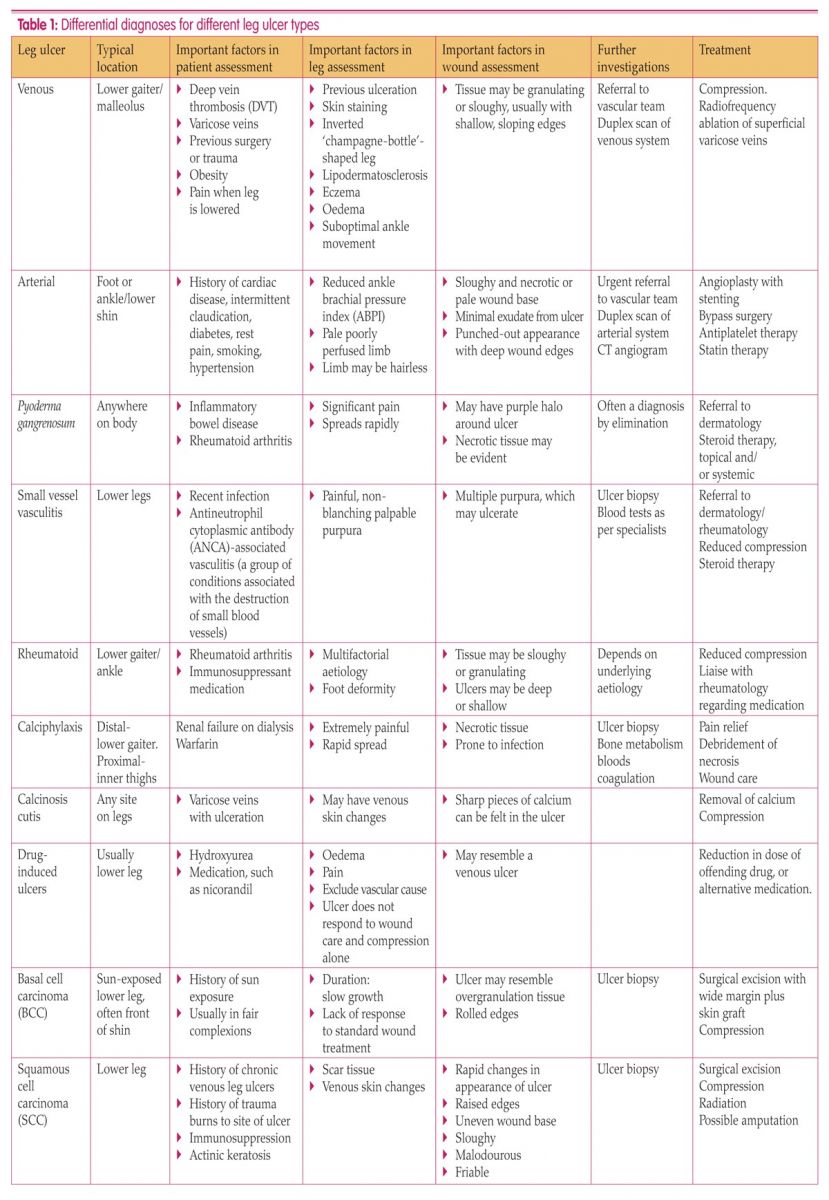References
Anderson I (2006) Aetiology, assessment and management of leg ulcers. Wound Essentials 1: 20–37
Anderson I (2012) Multidimensional leg ulcer assessment. Nurs Times 108(13): 17-20
Anderson (2018) Can this be the moment for leg ulcers? Br J Nurs 27(6): S4
Beldon, P (2011) Ten top tips for doppler ABPI. Wounds Int 2(4): 18–21
Bliss DE (2002) Calciphylaxis: What nurses need to know. Nephrol Nurs J 29(5): 433–8
British Associaton of Dermatology (2017) Cyclosporine. Available online: http://skinsupport.org.uk/conditions-details/ciclosporin (accessed 30 January, 2019)
Burnand KG, Whimster I, Naidoo A, Browse NL. (1982) Pericapillary fibrin in the ulcer-bearing skin of the leg: The cause of lipodermatosclerosis and venous ulceration. Br Med J (Clin Res Ed) 285: 1071–2
Circulation Foundation (2018) Leg ulcers. Available online: www.circulationfoundation.org.uk/help-advice/veins/leg-ulcers (accessed 10 December, 2018)
Etufugh C, Phillips T, Goldberg L, Jensen, S (2005) Squamous cell carcinoma. Wounds 17(11): 321–6
European Wound Management Association (2019) Atypical wounds. Available online: http://ewma.org/what-we-do/ewma-projects-old/we-are-currently-working-on/atypical-wounds/ (accessed 10 January, 2019)
Fletcher J (2007) Wound assessment and the TIME Framework. Br J Nurs 16(8): 462–6
Fukaya E, Margolis DJ (2013) Approach to diagnosing lower extremity ulcers. Dermatol Therap 26: 181–6
Goldie C, Brown J (2012) Managing obesity in primary care. Nurs Times 108(1/2): 14–6
Guest JF, Ayoub N, McIlwraith T, et al (2015) Health economic burden that wounds impose on the National Health Service in the UK. BMJ Open 5: e009283. doi: 10.1136/bmjopen-2015-009283
Guest JF, Ayoub N, McIlwraith T, et al (2016) Health economic burden that different wound types impose on the UK’s National Health Service. Int Wound J 14(2): 322–30
Harding K, Dowestt C, Fias L, et al (2015) Simplifying enous leg ulcer management. Consensus recommendations. Wounds International. Available online: www.woundsinternational.com (accessed 10 January, 2019)
Huilaja L, Turpeinen M, Tokola H, Kauma H, Tasanen K, Ikaheimo R (2016) Warfarin-induced calciphylaxis in patients with normal renal function. J Clin Pharm Ther 41(4): 449–52
Legs Matter (2018) Available online: https://legsmatter.org (accessed 10 January, 2019)
Matthew Q, Pompeo MD (2016) Pyoderma gangrenosum: recognition and management. Wounds 28(1): 7–13
Meyer V, Kerk N, Meyer S, Goerge T (2011) Differential diagnosis and therapy of leg ulcers. J Ditsch Dermatol Ges 9(12): 1035–51
Motley R, Kersey P, Lawrence C (2003) Multiprofessional guidelines for the management of the patient with primary cutaneous squamous cell carcinoma. Br J Plast Surg 56(2): 85–91
NHS England (2016) Commissioning for quality and innovation (CQUIN) guidance for 2017-2019. Available online: www.england.nhs.uk/wp-content/uploads/2018/04/cquin-guidance-2018-19.pdf
NHS England (2017) NHS RightCare scenario: the variation between sub-optimal and optimal pathways. Betty’s story: leg ulcer wound care. Available online: https://tinyurl.com/ bettysstory (accessed 10 December, 2018)
Oakley A (2016) Differential diagnosis of leg ulcer. Available online: www.dermnetnz.org/topics/differential-diagnosis-of-leg-ulcer/ (accessed 10 December, 2018)
Pieper B, Kirsner RS, Templin TN, et al (2007) Injection drug use. Arch Dermatol 143(10): 1305–09
Rayner R, Carville K, Keaton J, Prentice J, Santamaria N (2009) Leg ulcers: atypical presentations and associated comorbidities. Wound Prac Res 17(4): 168–85
Reich-Schupke S, Doerler M, Wollina U, et al (2015) Squamous cell carcinoma in chronic venous leg ulcers. Data of the German Marjolin Registry and review. J Ditsch Dermatol Ges 13(10): 1006–13
Roewert-Huber J, Lange-Asschenfeldt B, Stockfleth E, Kerl H (2007) Epidemiology and aetiology of basal cell carcinoma. Br J Dermatol 157 Suppl 2: 47–51
Royal College of Nursing (2000) The Management of Patients With Venous Leg Ulcers. RCN, London. Available online: www.rcn.org.uk/professional-development/publications/pub-001269 (accessed January 2019)
Santilli MD, Santilli SM (1999) Chronic critical limb ischaemia: Diagnosis, treatment and prognosis. Am Fam Physician 59(7): 1899–1908. Available online: www.aafp.org/afp/1999/0401/p1899.html (accessed 10 January, 2019)
Telfer NR, Colver GB, Morton CA (2008) Guidelines for the management of basal cell carcinoma. Br J Dermatol 159: 35–48
Tobón J, Whitney JD, Jarrett M (2008) Nutritional status and wound severity of overweight and obese patients with venous leg ulcers: a pilot study. J Vasc Nurs 26(2): 43–52
Tokoro S, Satoh T, Okubo Y, Igawa K and Yokozeki H (2009) Latent dystrophic subcutaneous calcification in patients with chronic venous insufficiency. Acta Derma Venereol 89: 505–8
Wounds UK (2016) Best Practice Statement: Holistic management of venous leg ulceration. Wounds UK, London
Anderson I (2012) Multidimensional leg ulcer assessment. Nurs Times 108(13): 17-20
Anderson (2018) Can this be the moment for leg ulcers? Br J Nurs 27(6): S4
Beldon, P (2011) Ten top tips for doppler ABPI. Wounds Int 2(4): 18–21
Bliss DE (2002) Calciphylaxis: What nurses need to know. Nephrol Nurs J 29(5): 433–8
British Associaton of Dermatology (2017) Cyclosporine. Available online: http://skinsupport.org.uk/conditions-details/ciclosporin (accessed 30 January, 2019)
Burnand KG, Whimster I, Naidoo A, Browse NL. (1982) Pericapillary fibrin in the ulcer-bearing skin of the leg: The cause of lipodermatosclerosis and venous ulceration. Br Med J (Clin Res Ed) 285: 1071–2
Circulation Foundation (2018) Leg ulcers. Available online: www.circulationfoundation.org.uk/help-advice/veins/leg-ulcers (accessed 10 December, 2018)
Etufugh C, Phillips T, Goldberg L, Jensen, S (2005) Squamous cell carcinoma. Wounds 17(11): 321–6
European Wound Management Association (2019) Atypical wounds. Available online: http://ewma.org/what-we-do/ewma-projects-old/we-are-currently-working-on/atypical-wounds/ (accessed 10 January, 2019)
Fletcher J (2007) Wound assessment and the TIME Framework. Br J Nurs 16(8): 462–6
Fukaya E, Margolis DJ (2013) Approach to diagnosing lower extremity ulcers. Dermatol Therap 26: 181–6
Goldie C, Brown J (2012) Managing obesity in primary care. Nurs Times 108(1/2): 14–6
Guest JF, Ayoub N, McIlwraith T, et al (2015) Health economic burden that wounds impose on the National Health Service in the UK. BMJ Open 5: e009283. doi: 10.1136/bmjopen-2015-009283
Guest JF, Ayoub N, McIlwraith T, et al (2016) Health economic burden that different wound types impose on the UK’s National Health Service. Int Wound J 14(2): 322–30
Harding K, Dowestt C, Fias L, et al (2015) Simplifying enous leg ulcer management. Consensus recommendations. Wounds International. Available online: www.woundsinternational.com (accessed 10 January, 2019)
Huilaja L, Turpeinen M, Tokola H, Kauma H, Tasanen K, Ikaheimo R (2016) Warfarin-induced calciphylaxis in patients with normal renal function. J Clin Pharm Ther 41(4): 449–52
Legs Matter (2018) Available online: https://legsmatter.org (accessed 10 January, 2019)
Matthew Q, Pompeo MD (2016) Pyoderma gangrenosum: recognition and management. Wounds 28(1): 7–13
Meyer V, Kerk N, Meyer S, Goerge T (2011) Differential diagnosis and therapy of leg ulcers. J Ditsch Dermatol Ges 9(12): 1035–51
Motley R, Kersey P, Lawrence C (2003) Multiprofessional guidelines for the management of the patient with primary cutaneous squamous cell carcinoma. Br J Plast Surg 56(2): 85–91
NHS England (2016) Commissioning for quality and innovation (CQUIN) guidance for 2017-2019. Available online: www.england.nhs.uk/wp-content/uploads/2018/04/cquin-guidance-2018-19.pdf
NHS England (2017) NHS RightCare scenario: the variation between sub-optimal and optimal pathways. Betty’s story: leg ulcer wound care. Available online: https://tinyurl.com/ bettysstory (accessed 10 December, 2018)
Oakley A (2016) Differential diagnosis of leg ulcer. Available online: www.dermnetnz.org/topics/differential-diagnosis-of-leg-ulcer/ (accessed 10 December, 2018)
Pieper B, Kirsner RS, Templin TN, et al (2007) Injection drug use. Arch Dermatol 143(10): 1305–09
Rayner R, Carville K, Keaton J, Prentice J, Santamaria N (2009) Leg ulcers: atypical presentations and associated comorbidities. Wound Prac Res 17(4): 168–85
Reich-Schupke S, Doerler M, Wollina U, et al (2015) Squamous cell carcinoma in chronic venous leg ulcers. Data of the German Marjolin Registry and review. J Ditsch Dermatol Ges 13(10): 1006–13
Roewert-Huber J, Lange-Asschenfeldt B, Stockfleth E, Kerl H (2007) Epidemiology and aetiology of basal cell carcinoma. Br J Dermatol 157 Suppl 2: 47–51
Royal College of Nursing (2000) The Management of Patients With Venous Leg Ulcers. RCN, London. Available online: www.rcn.org.uk/professional-development/publications/pub-001269 (accessed January 2019)
Santilli MD, Santilli SM (1999) Chronic critical limb ischaemia: Diagnosis, treatment and prognosis. Am Fam Physician 59(7): 1899–1908. Available online: www.aafp.org/afp/1999/0401/p1899.html (accessed 10 January, 2019)
Telfer NR, Colver GB, Morton CA (2008) Guidelines for the management of basal cell carcinoma. Br J Dermatol 159: 35–48
Tobón J, Whitney JD, Jarrett M (2008) Nutritional status and wound severity of overweight and obese patients with venous leg ulcers: a pilot study. J Vasc Nurs 26(2): 43–52
Tokoro S, Satoh T, Okubo Y, Igawa K and Yokozeki H (2009) Latent dystrophic subcutaneous calcification in patients with chronic venous insufficiency. Acta Derma Venereol 89: 505–8
Wounds UK (2016) Best Practice Statement: Holistic management of venous leg ulceration. Wounds UK, London



